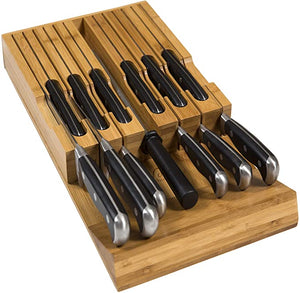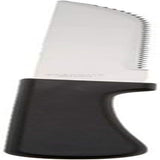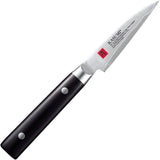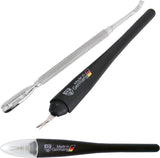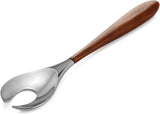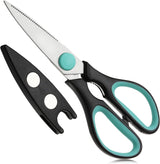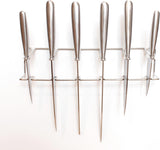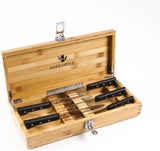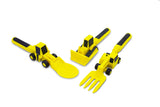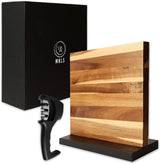Kitchen professionals and fish enthusiasts alike can agree that knowing how to clean a catfish with a fillet knife is an essential culinary skill. Whether youre prepping your fresh catch from a fishing trip or acquiring catfish from the market, the proper cleaning process ensures not only better taste but also safer preparation. In this guide, we will break down the steps to easily clean a catfish, along with expert tips, common mistakes to avoid, and more.
Why Cleaning a Catfish Requires Skill
Preparing a catfish for cooking isnt your ordinary fish-cleaning task. Known for their tough skin and unique anatomy, catfish require a specific set of techniques to make the process seamless. Using the right tool, such as a fillet knife, can simplify the experience without damaging the fish. A fillet knifes precise and flexible blade is perfect for navigating the intricate areas around the bones.
If youre looking for comprehensive information on perfecting knife skills, check out this helpful guide on kitchen knives.

Getting Started: Tools You Need
Before diving into the step-by-step process of how to clean a catfish with a fillet knife, assemble these essential tools:
- Fillet knife: A flexible and sharp fillet knife is crucial for creating clean and precise cuts. Learn more about sharpening your fillet knife.
- Cutting board: Use a non-slip cutting board made specifically for fish preparation.
- Pliers or catfish skinning tool: These tools help with removing the tough skin efficiently.
- Gloves: Latex or rubber gloves protect your hands from sharp fins and ensure a firm grip.
- Water source: Keep clean water nearby to rinse off the fish during the process.
Step-by-Step Process to Clean Catfish
1. Prepare the Workspace
Ensure your cutting board and tools are clean before beginning. Place the catfish on the cutting board and wear gloves to prevent slips. Always work in a well-ventilated area to make the task easier.
2. Remove the Catfishs Slime
Catfish are notorious for their slimy coating, which makes handling difficult. Use a knife or scraper to clear the slime under running water. You can also use coarse salt to scrub the surface.
3. Cut off the Fins
Use the fillet knife to remove sharp dorsal and pectoral fins by slicing down at an angle. This prevents accidents when handling the fish further.
4. Make the Initial Incision
Position the fish belly-up and use your knife to make a shallow cut from the anal opening toward the head. Avoid cutting too deep to prevent puncturing the intestines.
5. Gut the Fish
Carefully remove the internal organs by scooping them out with a finger or spoon. Rinse the cavity thoroughly with cold water.
6. Remove the Head
Grip the head firmly and make a cut just behind the gills. Apply steady pressure with the fillet knife for a clean removal.
7. Skin the Catfish
Using pliers or a skinning tool, grab the tough skin near the incision at the head. Pull firmly to peel the skin toward the tail. Repeat on both sides until the fish is clean.
8. Fillet the Catfish
Use your fillet knife to cut along the backbone from head to tail, separating the fillet from the ribs. Flip the fish over and repeat on the other side. To sharpen your knife for precision, read this step-by-step sharpening guide.
For a visual approach to filleting other fish types, refer to this bluegill filleting tutorial.
Common Mistakes to Avoid
Even seasoned cooks encounter challenges when cleaning catfish. Avoid these mistakes:
- Dull knife: A dull knife complicates precision cutting and makes the task unsafe.
- Piercing the intestines: This can release unwanted odors and contaminants into the meat.
- Skipping the slime removal: Neglecting this step makes handling slippery catfish nearly impossible.
FAQ Section
Q1: Why is a fillet knife ideal for cleaning catfish?
A: Fillet knives are designed for precision and flexibility, making them perfect for intricate tasks such as removing bones and skin.
Q2: Can I use other tools instead of a fillet knife?
A: While a fillet knife is highly recommended, you can use other sharp knives in a pinch. However, the results may lack the finesse provided by a proper fillet knife.
Q3: How often should I sharpen my fillet knife?
A: Regularly sharpen your fillet knife using methods like those outlined in this knife sharpening guide to maintain its efficiency during repeated use.
:max_bytes(150000):strip_icc()/faw-chefs-knives-2-test-paudin-pro-8in-nsimpson-296-b0c27d6346ef4e0590c865f69f5453a6.jpeg)
Conclusion
Learning how to clean a catfish with a fillet knife is both an art and a skill that every kitchen professional should master. Equipped with the right tools, techniques, and a touch of patience, you can prepare catfish like a pro. Focus on maintaining sharp knives for flawless cuts and practice these steps multiple times to achieve perfection.
For further tips on knife maintenance, visit this comprehensive guide on cleaning knives.
This article contains affiliate links. We may earn a commission at no extra cost to you.
